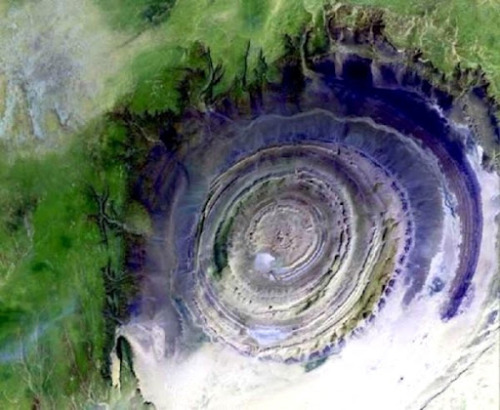sinousine:skinned-teen:Strangest Places on Earth1. PAMUKKALE - TURKEY The strange and weirdly beaut
sinousine:skinned-teen:Strangest Places on Earth1. PAMUKKALE - TURKEY The strange and weirdly beautiful terraced pools of Pamukkale have been appreciated for over two millennia. Thousands of years ago earthquakes, which are common in Turkey, created fractures that allowed powerful hot springs to bring water rich in calcium carbonate to the surface. As the water evaporated the chalky material condensed and formed layer-upon-layer of Travertine and thus slowly built up the walls over time in the same way that a stalactite forms in a cave. Pammakale means Castle of Cotton but the Greco-Romans built a town above it called Heirapolis – meaning “Holy City” or “Sacred City”. 2. GREAT BLUE HOLE - BELIZE Found on both land and in the ocean throughout the Bahamas and the national waters of Belize are deep circular cavities known as Blue Holes which are often the entrances to cave networks, some of them up to 14 kilometres in length. Divers have reported a vast number of aquatic creatures some of which are still new to science. In addition, they’ve recorded chambers filled with stalactites and stalagmites which only form in dry caves. For the explorers this was proof that at one time, nearly 65,000 years ago, when the world was in the grip of the last major ice age, the sea level of the Bahamas was up to 150 metres lower than it is today. Over time the limestone of the islands was eroded by water and vast cave networks created. When sea levels rose again about 10,000 years ago some of these collapsed inwards and the Blue Holes were formed.3. EYE OF AFRICA - MAURITANIA From space this mysterious depression in the Sahara Desert of Mauritania really does look like a human eye. The image to the left is the “pupil” but a visit to Google Earth zoomed out a little will reveal the cliffs that make up the rest of the eye. This natural phenomenon is actually a richat structure caused by the dome shaped symmetrical uplifting of underlying geology now made visible by millennia of erosion. There still remain academics that believe it is the sight of a meteor impact.4. SUQATRA ISLAND - YEMEN This enchanting and little known island also known as Socotra is located off the coast of Yemen in the Middle East. Isolated from the rest of the world its plants have evolved into many bizarre shapes and forms that are unknown in other parts of the world. One of the most famous of these is the Dragon’s Blood Tree the sap of which is used to make crystals that can be used as a dye or as an alleged aphrodisiac. 5. SPAIN, RIO TINTO The vast mines of Rio Tinto give a hypnagogic, almost martian landscape. Its growth has consumed not only mountains and valleys but even entire villages. This river has gained recent scientific interest due to the presence of extremophile aerobic bacteria that dwell in the water.The extreme conditions in the river are analogous to other locations in the solar system thought to contain liquid water, such as subterranean Mars. Río Tinto is notable for being very acidic (pH 2) and its deep reddish hue. 6. FLY GEYSER, RENOFly Ranch features two geysers, one of which is dormant. The other, Fly Geyser, was accidentally formed by a water well drill that hit a geothermal source, and continuously sprays hot water. Fly Ranch is private property and does not allow visitors.China has those pools tooIt’s telling that one of these structure is man-made. -- source link
Tumblr Blog : skinned-teen.tumblr.com
#nature





